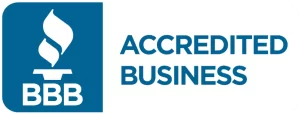Managing payroll and ensuring timely tax submission is a critical aspect of running a successful business. QuickBooks Desktop is a powerful tool that simplifies the payroll tax submission process, allowing you to focus more on growing your business and less on administrative tasks. In this guide, we will explore the essential steps and best practices for paying payroll taxes using QuickBooks Desktop.
Getting Started with Payroll Taxes in QuickBooks Desktop
Before you begin the process of payroll tax submission, it’s important to set up your QuickBooks Desktop correctly. This setup involves several key steps:
Initial Setup
Ensure your QuickBooks Desktop is installed and set up correctly. This includes setting up your company file with all the necessary business information, such as your EIN (Employer Identification Number), business address, and payroll tax preferences.
Employee Information
Enter all relevant employee information into QuickBooks Desktop. This data includes personal details, tax filing status, and allowances. Accurate entry of this information is crucial for correct payroll tax calculations.
Updating Tax Tables
To ensure accurate tax calculations, make sure that your QuickBooks Desktop has the latest tax tables. QuickBooks Desktop offers an easy update feature, which you should regularly use to download the most recent payroll tax table updates.
Calculating Payroll Taxes
With QuickBooks Desktop, calculating payroll taxes is automated. Here’s how you can ensure that these calculations are performed correctly:
Review Employee Data
Regularly review and update employee data as necessary. Changes in employee marital status, allowances, or additional income can affect tax withholdings.
Run Payroll Checks
Use QuickBooks Desktop to run payroll checks. The software automatically calculates the amount of federal, state, and local taxes to withhold based on the current tax tables and employee settings.
Submitting Payroll Taxes
Prepare for Submission
After running payroll, review the payroll summary to ensure all information is accurate before submitting taxes. This includes verifying wages, tax amounts, and deductions.
Using EFTPS for Federal Taxes
For federal tax submissions, QuickBooks Desktop integrates seamlessly with the Electronic Federal Tax Payment System (EFTPS). Here’s how you can use EFTPS through QuickBooks:
- Set up your EFTPS account: If you haven’t already, set up an account on the EFTPS website. This account will be linked to your QuickBooks Desktop.
- Submit your payment: Through QuickBooks, you can schedule and submit your payments directly to EFTPS, ensuring that your federal taxes are paid on time.
State and Local Taxes
QuickBooks Desktop also handles state and local tax submissions. Depending on your state, QuickBooks will guide you through the process of submitting these taxes, either online or by providing the necessary forms for mailing.
Regular Maintenance and Compliance
To maintain compliance and ensure smooth payroll tax submissions, consider the following practices:
Regular Updates
Always keep your QuickBooks Desktop software up to date. Regular updates not only provide new features but also include critical tax table updates and compliance adjustments.
Audit Trails
Utilize QuickBooks’ audit trail feature to keep track of all changes made within your payroll. This can be invaluable in case of discrepancies or if you are audited by the IRS.
Backups
Regularly back up your QuickBooks data. In the event of a system failure or data corruption, having a backup will allow you to restore your information quickly and continue with your payroll processing without significant delays.
Conclusion
Paying payroll taxes through QuickBooks Desktop Payroll Tax Submission is straightforward if you follow the right procedures and keep your system up to date. By leveraging QuickBooks Desktop’s powerful features, you can automate much of the process, reduce the likelihood of errors, and ensure compliance with tax regulations. Remember, the key to successful payroll management is consistency and attention to detail. Keep your data accurate, stay informed on tax law changes, and use QuickBooks Desktop to its full potential to streamline your payroll tax submissions efficiently.
FAQs on Paying Payroll Taxes with QuickBooks Desktop
How do I set up my QuickBooks Desktop for payroll tax submissions?
Setting up your QuickBooks Desktop for payroll tax submissions involves several important steps:
- Install QuickBooks Desktop: Ensure that you have the latest version installed on your computer.
- Company Setup: Input your business information, including your Employer Identification Number (EIN) and business address.
- Employee Setup: Add all necessary employee details, such as their SSNs, addresses, and tax withholding preferences.
- Update Tax Tables: Regularly update your tax tables in QuickBooks to ensure accurate payroll calculations.
How do I calculate payroll taxes in QuickBooks Desktop?
Calculating payroll taxes in QuickBooks Desktop is automated, but you should ensure everything is set correctly:
- Verify Employee Information: Regularly check that all employee data is current and accurate.
- Run Payroll: Execute the payroll process within QuickBooks, which will automatically calculate the taxes based on the latest information and tax tables.
- Review Calculations: Before finalizing payroll, review the calculations for accuracy to avoid errors in tax submissions.
What are the steps to submit payroll taxes through QuickBooks Desktop?
Submitting payroll taxes through QuickBooks Desktop can be done efficiently by following these steps:
- Review Payroll Details: Ensure all payroll information is correct before submission.
- Federal Taxes: Use the EFTPS (Electronic Federal Tax Payment System) linked through QuickBooks to submit federal taxes.
- State and Local Taxes: Follow the prompts in QuickBooks to submit state and local taxes, which may vary depending on your location.
How often should I update QuickBooks Desktop for accurate payroll tax processing?
To ensure accurate payroll tax processing, update your QuickBooks Desktop frequently:
- After Each Software Update Release: QuickBooks often releases updates that include critical patches and new features.
- Following Tax Law Changes: Update whenever there are significant tax law changes to keep your calculations compliant.
- Regular Maintenance Checks: Perform regular maintenance checks to ensure that your software is running efficiently and accurately.
What should I do if I find an error after submitting payroll taxes in QuickBooks Desktop?
If you discover an error after submitting payroll taxes, you can take the following steps:
- Identify the Error: Locate where the mistake occurred, whether in employee information, tax calculations, or submission entries.
- Correct the Error in QuickBooks: Make the necessary adjustments in your QuickBooks records.
- Amend the Tax Submission: File an amended return if necessary, using the procedures outlined in QuickBooks or advised by your tax professional.
Can QuickBooks Desktop help with both federal and state tax filings?
Yes, QuickBooks Desktop is designed to assist with both federal and state tax filings:
- Federal Tax Filings: Integrated tools like EFTPS within QuickBooks facilitate direct federal tax payments.
- State Tax Filings: QuickBooks provides specific forms and filing procedures for each state, guiding users through the submission process according to state laws.
These FAQs cover crucial aspects of using QuickBooks Desktop for payroll tax submissions, ensuring you can manage your payroll taxes effectively and stay compliant with tax regulations.










